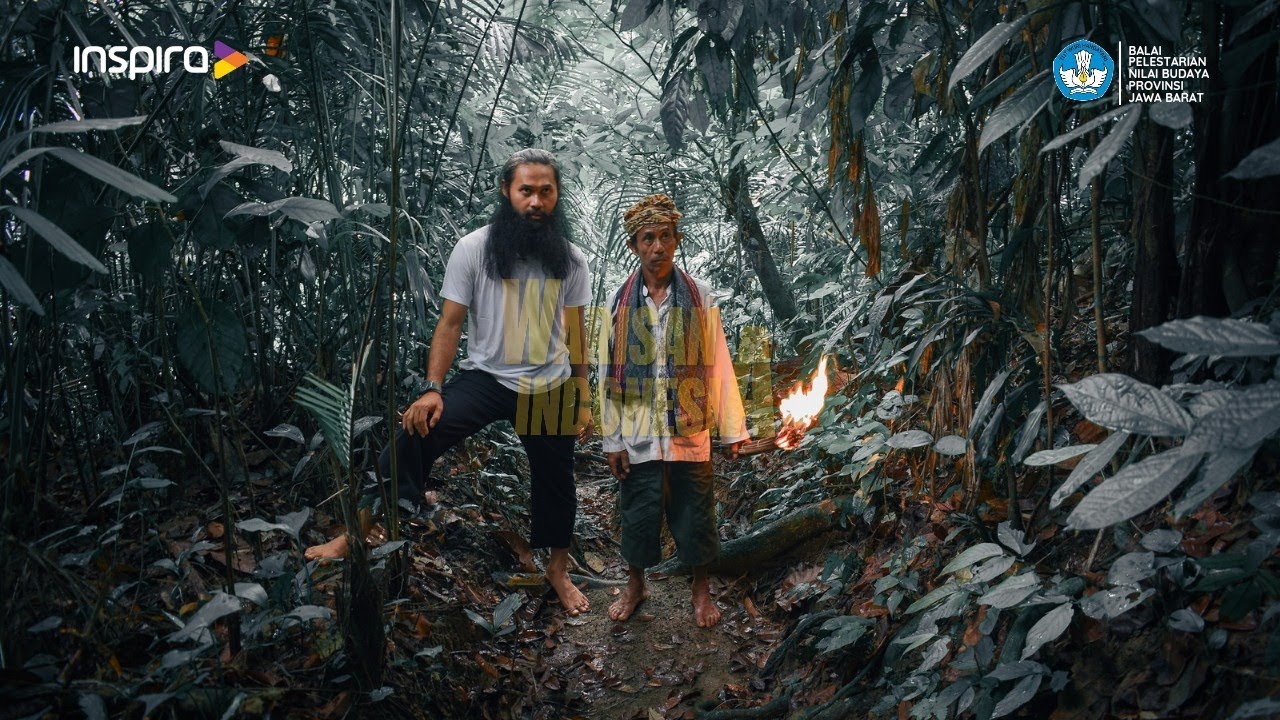Tari Jawa Barat/ part 2/Tari Indonesia/Tari Nusantara/Tari tradisional Indonesia
Summary
TLDRThis video script delves into the diverse traditional dances of West Java, Indonesia. It explores the Cirebon mask dance, which uses various masks symbolizing different life stages and was integrated with local arts under the Jenggala Kingdom. The script also covers the Srikandi Mustakaweni dance, depicting a heroic battle between two female characters. Additionally, it introduces the Jaipongan dance, born from the creativity of Gugum Gumbira, and the mystical Sintren dance, which conveys Islamic teachings through its performance. The video aims to educate and preserve the rich cultural heritage of West Java.
Takeaways
- 🎭 Topeng Cirebon is a traditional dance from the Cirebon region, known for its performers wearing masks and called 'dalang' during the performance.
- 🌟 The masks used in Topeng Cirebon represent various characters such as infants, children, teenagers, adults, and angry figures.
- 📚 The dance has historical roots in the Jenggala Kingdom and was influenced by the spread of Islam in Java, becoming a vehicle for spreading the religion.
- 💃 Tari Srikandi Mustakaweni is a heroic dance depicting a battle between two female characters, inspired by Javanese mythology.
- 🎨 Tari Jaipongan is a creative dance born from the mind of Gugum Gumbira, combining various traditional art forms of Karawang, West Java.
- 🌐 Jaipongan has become an icon of West Java's performing arts, often showcased to entertain international guests.
- 🧚♀️ Tari Sintren is a mystical dance from Cirebon, often associated with the story of a love affair between two legendary figures.
- 📖 Sintren dancers must be in a pure state, often fasting before performing, to allow the spirit to enter them without hindrance.
- 👑 The dance is used by religious leaders to spread Islamic teachings and values in daily life.
- 💵 The performance of Sintren includes a symbolic act where money is thrown at the dancer, representing the fall of humans from grace when they prioritize worldly desires.
- 🌈 The script highlights the rich cultural diversity of West Java, emphasizing the importance of preserving these traditions.
Q & A
What is the main focus of the video script?
-The video script focuses on explaining various traditional dances in West Java, particularly in Part 2 of the series.
What is Tari Topeng Cirebon?
-Tari Topeng Cirebon is a traditional dance from the Cirebon region, performed with masks and accompanied by the Cirebon gamelan music.
What are the different types of masks used in Tari Topeng Cirebon?
-The types of masks include Panca (Pancha), Wanda, Samba, Rumyang, Patih (or Tumenggung), and Kelana (or Rahwana), each representing different characters and stages of life.
How did Tari Topeng Cirebon evolve historically?
-It was introduced to Cirebon during the reign of the Jenggala Kingdom and later merged with local arts, becoming a unique form of mask dance. It was also used as a vehicle for spreading Islam in Java.
What is the significance of Tari Srikandi Mustakaweni?
-Tari Srikandi Mustakaweni is a heroic dance depicting a battle between two female characters, Dewi Srikandi and Dewi Mustakaweni, and is performed in pairs by women.
Who are the characters represented in Tari Srikandi Mustakaweni?
-Dewi Srikandi is a character from the Pandawa family and one of Raden Arjuna's wives, while Dewi Mustakaweni is the daughter of Prabu Niwatakawaca and known for her magical abilities.
What is Tari Jaipongan and who created it?
-Tari Jaipongan is a dance created by Gugum Gumbira, originating from Bandung, and it combines various traditional arts of Karawang such as pencak silat, wayang golek, topeng banjet, and ketuk tilu.
Why is Tari Jaipongan significant in West Java?
-Tari Jaipongan is significant as it has become an icon of West Javanese art and is often performed at important events to entertain foreign guests.
What is the meaning behind the dance called Sintren?
-Sintren is a mystical or magical dance from Cirebon, often performed by a woman wearing a special costume and black glasses, symbolizing the human life cycle and the importance of not prioritizing worldly things over spiritual ones.
What are the preparations a dancer must make before performing Sintren?
-The dancer must be in a pure and clean state, often fasting and avoiding sins before the performance to ensure the spirit can enter their body without difficulty.
How does the performance of Sintren convey a message about life?
-The performance of Sintren uses the metaphor of a chicken coop's curved shape to remind people of the human life cycle, where one starts from a weak state, strives to reach a peak, and eventually returns to the ground, symbolizing the fall that can occur when one is too focused on worldly matters.
Outlines

This section is available to paid users only. Please upgrade to access this part.
Upgrade NowMindmap

This section is available to paid users only. Please upgrade to access this part.
Upgrade NowKeywords

This section is available to paid users only. Please upgrade to access this part.
Upgrade NowHighlights

This section is available to paid users only. Please upgrade to access this part.
Upgrade NowTranscripts

This section is available to paid users only. Please upgrade to access this part.
Upgrade NowBrowse More Related Video

Budaya dan Kekhasan Provinsi Jawa Barat - Seri Budaya Indonesia

Bentuk Keragaman di Indonesia - Pendidikan Pancasila Kelas 5 Semester 2

Kagum dengan Kebudayaan Suku Sunda? Ini Dia Fakta Menarik yang Wajib Anda Ketahui

Budaya dan Kekhasan Provinsi Sumatra Barat - Seri Budaya Indonesia

Budaya dan Kekhasan Provinsi Jawa Timur - Seri Budaya Indonesia

HUTAN KERAMAT DI KAMPUNG ADAT KUTA | WARISAN INDONESIA SEASON 2
5.0 / 5 (0 votes)